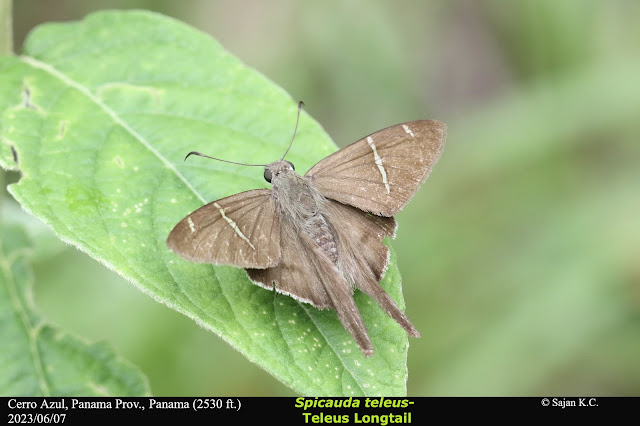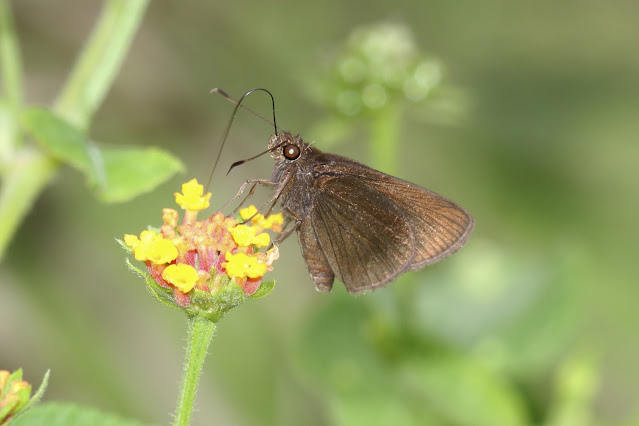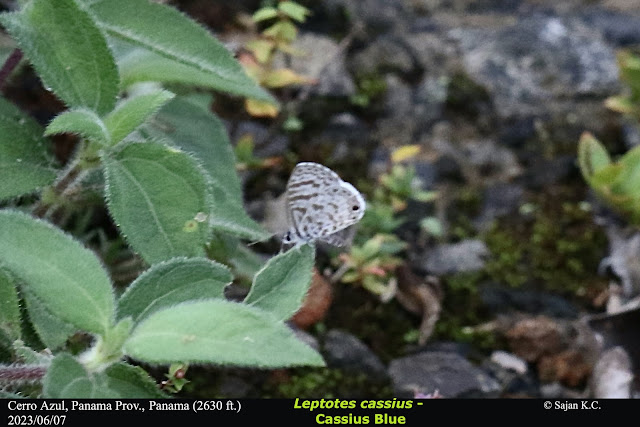Butterflies of Panama
During our summer 2023 expedition to Panama, we spent three weeks exploring the vibrant butterfly fauna of central Panama, focusing on Panama City and Gamboa.
Rarity Index:
extremely rare/endangered
very rare/vulnerable
rare
uncommon
common
* beside rarity color represents the species is local. For instance, * represents the species is rare and local.
All images are from Panama except for Historis odius (Fabricius, 1775) from Texas (also given in the caption) becasue a better image was available.
Our Progress
Hesperiidae (109): Skippers 
Hesperiids are commonly known as skippers and are members of true butterflies (Papilionoidea). They have hooked antennae and small wings compared to their bulky bodies. Some groups keep their wings closed while some prefer to keep them flat open. Hesperiids have a very fast flight what with some are called swifts and darts.
Eudaminae (20)
Pyrrhopyginae (03)
| Agara michaeli - Fiery Myscelus |
Mysoria barcastus - Royal Firetip |
Pyrrhopyge evansi - Evans' Firetip |
Pyrginae (27)
Tagiadinae (01)
| Celaenorrhinus cynapes - Cynapes Flat |
Hesperiinae (58)
Papilionidae (09): Swallowtails 
Commonly known as Swallowtails, members of this family are some of the largest butterflies in the world. They can be easily recognized by their upturned antennae, lack of palpi, large eyes and the presence of osmaterium in larval stage. Ancient families such as Parnassiinae show some exceptions. Despite the common name, not all species have tails.
Papilioninae (09)
Pieridae (15): Whites and Yellows 
Also known as the whites and yellows, Pieridae can often be seen mud-puddling. The name "butterfly" is believed to have originated from common brimstone Gonepteryx rhamni which is butter in color.
Pierinae (01)
| Glutophrissa drusilla - Florida White |
Coliadinae (14)
| Aphrissa statira - Statira Sulphur |
Eurema agave - Agave Yellow |
Eurema albula - Ghost Yellow |
Eurema daira - Barred Yellow |
Eurema elathea - Banded Yellow |
Eurema nise - Mimosa Yellow |
Lycaenidae (57): Blues 
Also known as the blues because of the blue upperwings of most species, this family contains some of the smallest butterflies of the world. Brephidium exilis - Western Pygmy-blue, is considered to be the smallest butterfly found in America.
Polyommatinae (03)
| Cupido comyntas - Eastern Tailed-blue |
Hemiargus hanno - Hanno Blue |
Leptotes cassius - Cassius Blue |
Theclinae (54)
Riodinidae (43): Metalmarks 
Commonly known as Metalmarks in the Americas, these butterflies show rather weak flight, often perch under the leaves. They are mostly found inside forests.
Riodininae (43)
Nymphalidae (69): Brush-footed Butterflies 
Commonly known as the brush-footed butterflies, members of this family have only four functional legs while the forelegs are vestigial. Previously it was separated into different families such as Danaindae, Satyridae, Libytheidae, etc. which now are treated as the subfamilies of Nymphalidae.
Heliconiinae (08)
Nymphalinae (09)
Biblidinae (17)
Limenitidinae (04)
| Adelpha basiloides - Spot-celled Sister |
Adelpha cocala - Orange-washed Sister |
Adelpha iphicleola - Confusing Sister |
Adelpha iphiclus - Pointed Sister |
Cyrestinae (02)
| Marpesia chiron - Many-banded Daggerwing |
Marpesia petreus - Ruddy Daggerwing |
Charaxinae (02)
| Archaeoprepona demophon- One-spotted Prepona |
Prepona laertes - Feathered Prepona |
Satyrinae (23)
Danainae (04)
| Danaus plexippus - Monarch |
Ithomia diasia - Diasia Clearwing |
Methona confusa - Confusa Tigerwing |
Scada zibia - Zibia Clearwing |














































































































































































































































































































































Comments
Post a Comment